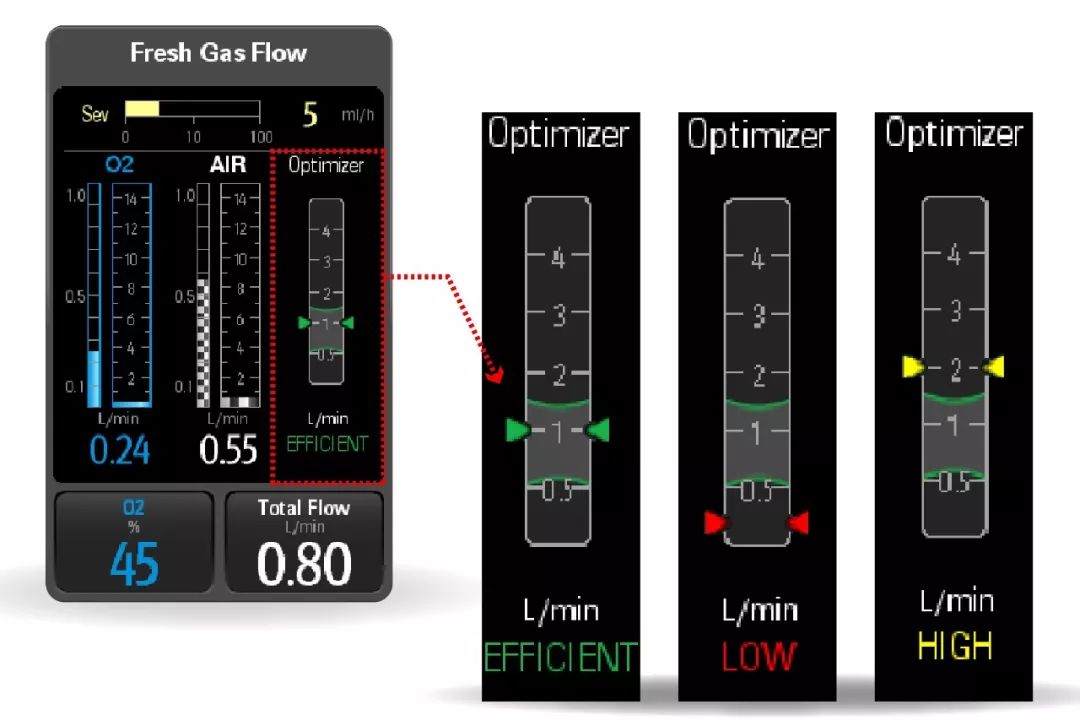Repost Essay:
What does a car have in common with an anesthesia machine?
The answer is greenhouse gases – both of them generate exhaust that would potentially cause global warming. But an anesthesia machine can actually be worse.
Studies shows that only less than 5 percent of anesthetic can be consumed by a patient during surgery.[1]The remaining 95% which fails to metabolize are usually vented into the atmosphere by the hospital’s scavenging system. However, most of the waste anesthetic gases (WAGs) would stay in the atmosphere for a long time before eventually turning to greenhouse gases – contributing to the depletion of the ozone layer and glacier retreat.
It is surprising but true. For example, desflurane, one of the commonly used inhaled anesthetics, has 10 years of atmospheric lifetime.[2]It is 3,766 times as much as the greenhouse warming potential of carbon dioxide (CO2).[3] Based on the EU average CO2 emission, using desflurane for an hour is equivalent to driving 375 to 750 kilometers.[2]
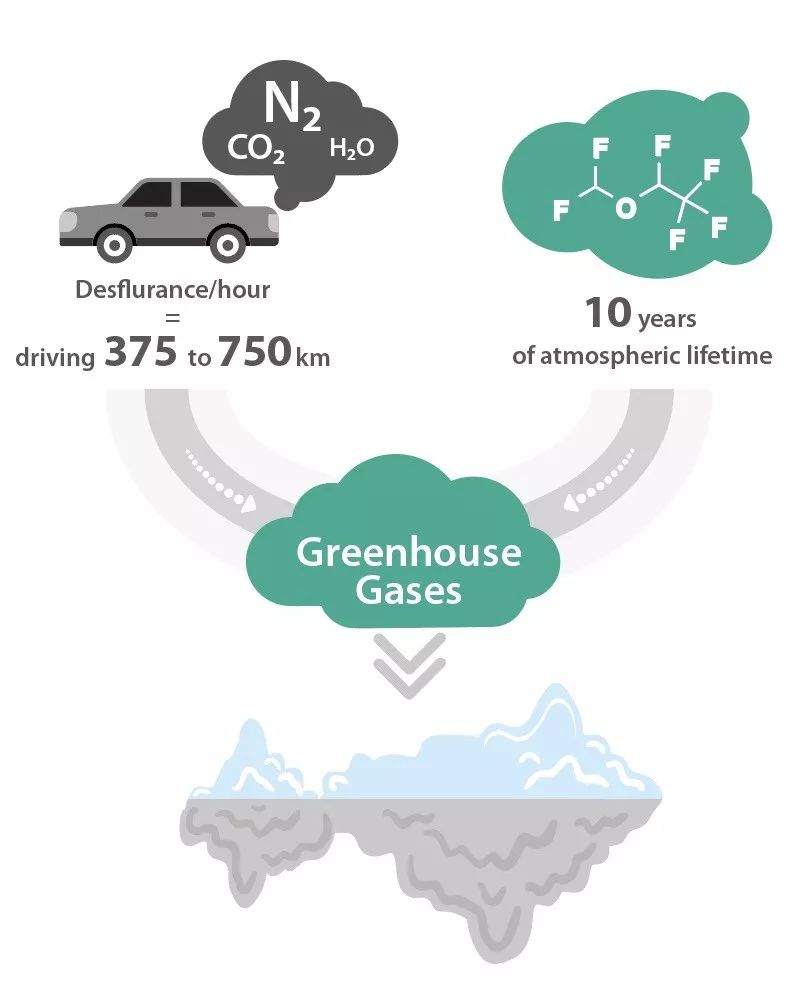 Beyond the environmental impacts, adverse health effects from long-term exposure to volatile anesthetics – even at low concentrations – raise concerns for medical staff in the surgical field. In the U.S., more than 250,000 healthcare workers are at risk of being affected by leaking anesthetic gases.[4] Potential consequences of being exposed to WAGs include nausea, headaches, fatigue, and irritability, as well as sterility, miscarriages, birth defects, cancers, and liver and kidney disease. [5]
Beyond the environmental impacts, adverse health effects from long-term exposure to volatile anesthetics – even at low concentrations – raise concerns for medical staff in the surgical field. In the U.S., more than 250,000 healthcare workers are at risk of being affected by leaking anesthetic gases.[4] Potential consequences of being exposed to WAGs include nausea, headaches, fatigue, and irritability, as well as sterility, miscarriages, birth defects, cancers, and liver and kidney disease. [5]
Several strategies are recommended to minimizethe environmental and health impacts of WAGs:
▶ Lowering the fresh gas flow
▶ Minimizing leaks in the breathing circuit of the anesthesia machine
▶ Adopting an efficient anesthetic gas scavenging system
To create a green operating room for healthcare workers, Mindray integrates a series of advanced tools into its anesthesia machines to help doctors optimize the management of fresh gas and anesthetics, and enhance the safety of the environment.
Optimizer with AA Measurement, achieving safe low flow anesthesia
The fresh gas flow rates in the circuit can affect the amount of anesthetic agent used. Unless necessary, the low fresh gas flow rate should always be considered to reduce the WAGs, not only for safety reasons, but for cost reasons too. Statistics from the Department of Anesthesiology in the University of Nebraska Medical Center show that nearly a million dollars can be saved by lowering fresh gas flow rates for 4 years.[6]
Performing safe low flow anesthesia requires accurate monitoring of the anesthetic consumption and patient status. The innovative Optimizer, an electronic fresh gas flow indicator in Mindray’s A7 and WATO EX-65 Pro anesthesia machines, can indicate the recommended real-time fresh gas flow setting against the current setting value.
The grey area shows the recommended value range. The arrows indicate the current setting value, with different colors showing the status of fresh gas flow (green – efficient, yellow – high, red – low).
With a vivid display, the Optimizer advises anesthesiologists of the safe low flow value range required by patients in different conditions, achieving the balance between patient safety and anesthetic waste.
When an anesthesia system is configured with the AG module, anesthetic consumption rate per hour can be calculated with the AA Measurement tool, helping anesthesiologists closely monitor and control the anesthetic agent consumption.
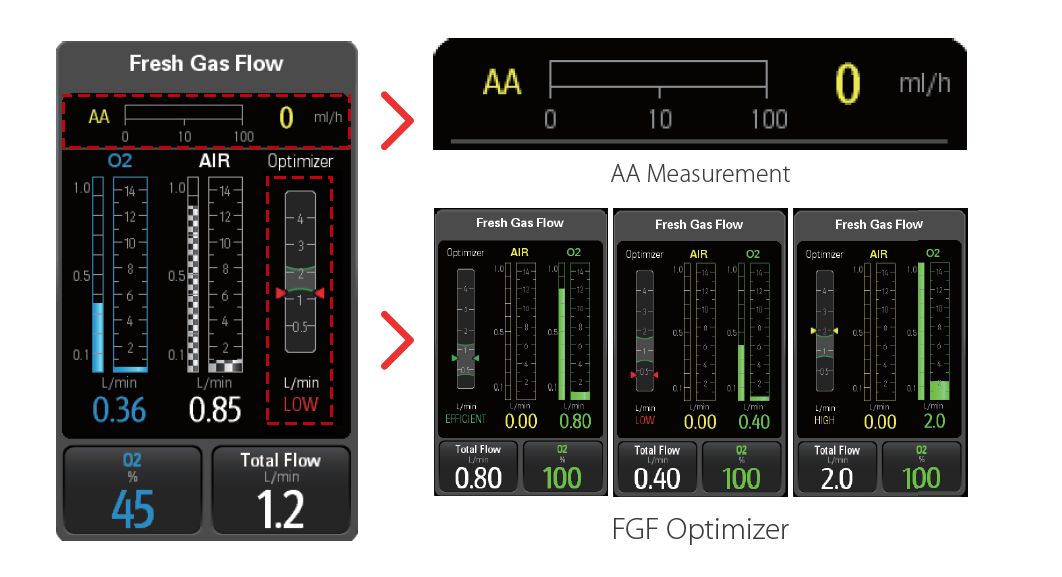
Flow Pause and Sample Gas Return, minimizing anesthesia leaks
When the breathing system is temporarily disconnected for intubation or suction, the continuous fresh gas flow has to be suspended to prevent leaks into the room. The Flow Pause function in Mindray’s anesthesia machines is designed to temporarily discontinue the fresh gas flow and mechanical ventilation to prevent operating room staff from being exposed to unnecessary anesthesia leaks.
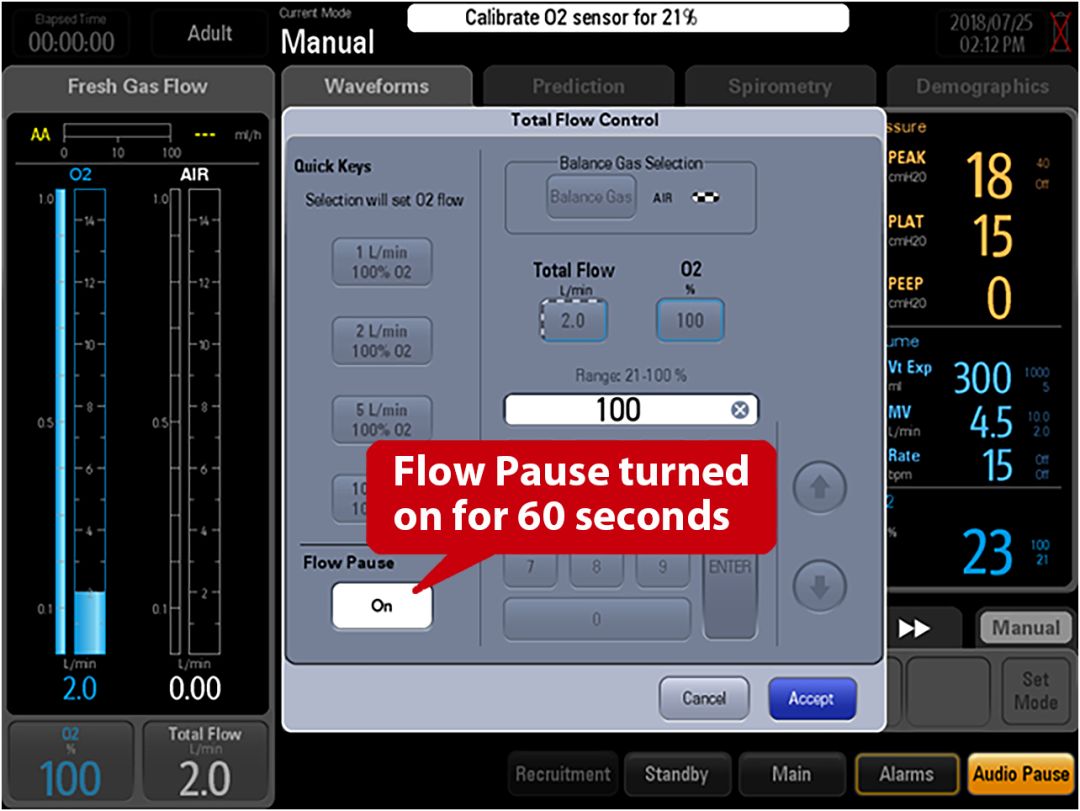
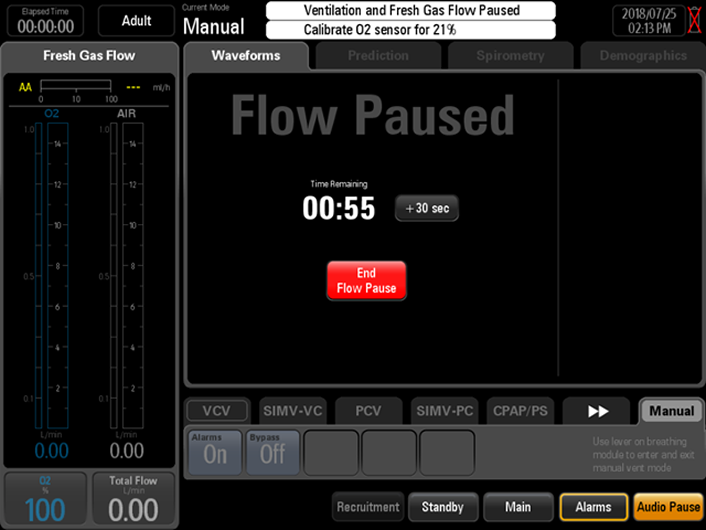
Once the flow is paused, the countdown timer will be immediately enabled. The default countdown time is 60 seconds. Users can choose to add 30 seconds as needed every time utill the countdown time reaches a maximum of 2 minutes, therefore not undermining patient safety.
Loss of sample gases should also be considered when performing safe low flow anesthesia. Modern sidestream analysers usually require 50 to 250 mL/min of gas sampling rates from the breathing circuit. Venting the sample gas to the operating room can result in extra WAGs. Mindray’s anesthesia machines offer the option to return the sample gases to the circuit so that the amount of gases can be reused.
AGSS, adapted to the hospital’s WAGD
An anesthetic gas scavenging system (AGSS) is designed to vent WAGs out of the surgical environment to reduce exposure. An ineffective AGSS would fail to match the hospital’s own waste anesthetic gas disposal systems (WADG). However, the AGSS from Mindray anesthesia machines can adjust its scavenging rate to the requirements of different hospitals’ WADGs.
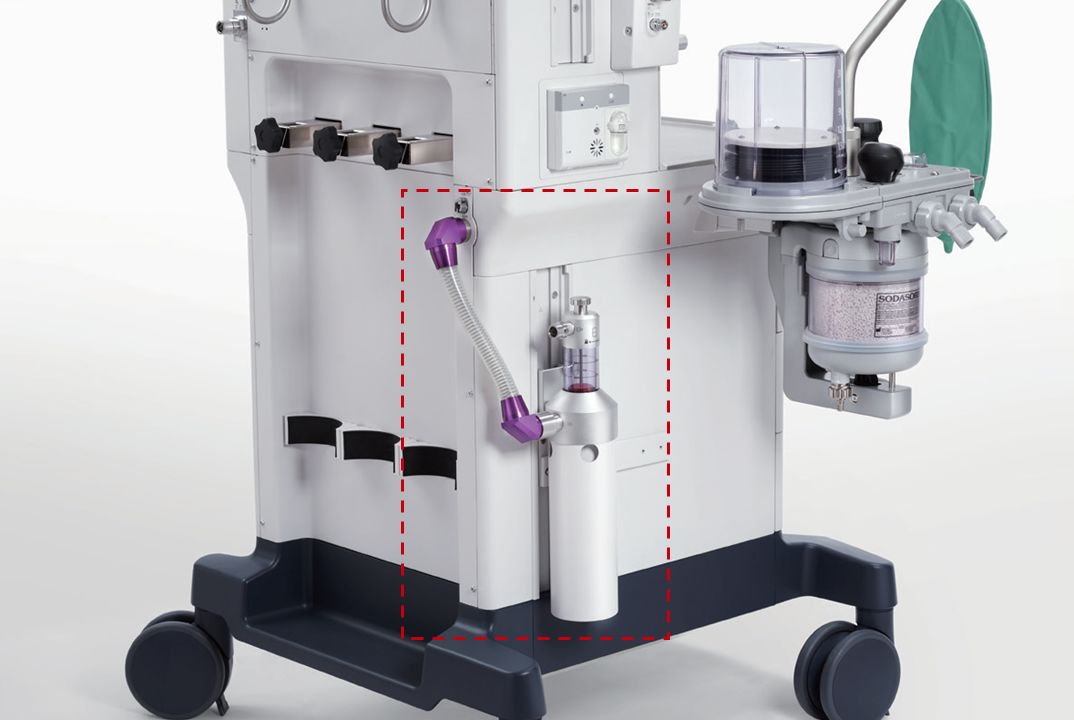
In the upcoming new generation of Mindray A Series anesthesia machines, a new version of AGSS will help hospitals address the problem of improper calibration of scavenging systems and to save more energy. More details will be unveiled soon.
As the WAGs issue raises more awareness, the importance of creating a green operating room is recognized by an increasing number of healthcare providers. By integrating advanced fresh gas management tools into the anesthesia machines, Mindray offers a safe and cost-effective solution for hospitals to achieve a better peri-operative environment for patients, medical staff and the local community, and of course, glaciers.
[1] Gadani, H., & Vyas, A. (2011). Anesthetic gases and global warming: Potentials, prevention and future of anesthesia. Anesthesia,essays and researches, 5(1), 5.
[2] Ryan, S. M., & Nielsen, C. J. (2010). Global warming potential of inhaled anesthetics: application to clinical use. Anesthesia & Analgesia, 111(1), 92-98.
[3] Oyaro, N., Sellevåg, S. R., & Nielsen, C. J. (2005). Atmospheric chemistry of hydrofluoroethers: Reaction of a series of hydrofluoroethers with OH radicals and Cl atoms, atmospheric lifetimes, and global warming potentials. The Journal of Physical Chemistry A, 109(2),337-346.
[4] Chemical Hazards: Health and Safety Practices Survey of Healthcare Workers. Centers for Desease Control and Prevention. Available at: https://www.cdc.gov/niosh/topics/healthcarehsps/gases.html. Accessed November 21, 2019.
[5] Occupational Safety & Health Administration, U.S. Department of Labor. (Revised 18 May 2000). Anesthetic Gases: Guidelines for Workplace Exposures. Retrieved from: http://www.osha.gov/dts/osta/anestheticgases/.
[6] Cobos, F. V., Haider, H., Barrera, A., & Tinker, J.(2007). Computerized tracking and comparative cost analysis of sevoflurane and desflurane. Anesthesiology, 107, A1108.

